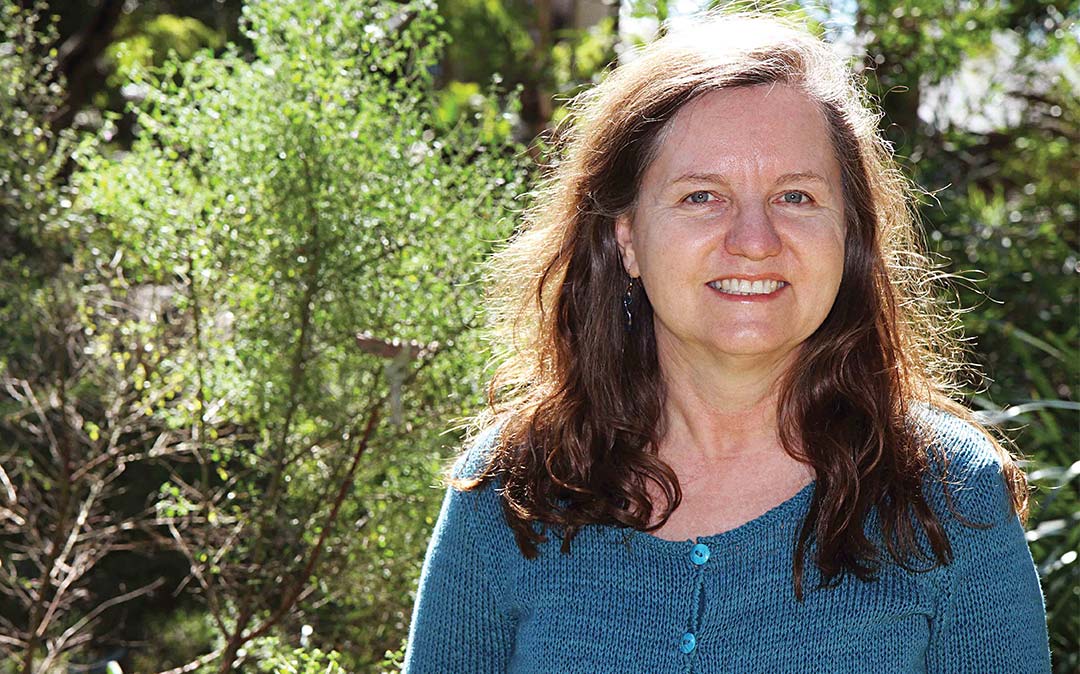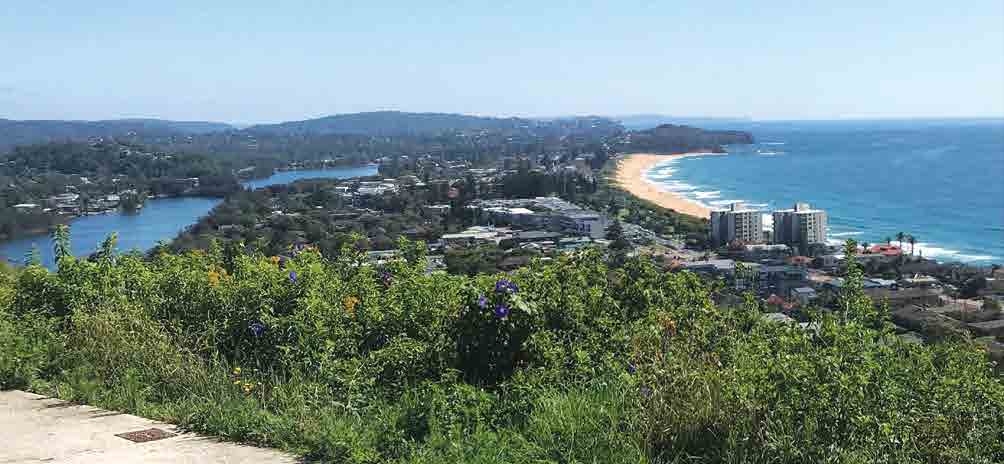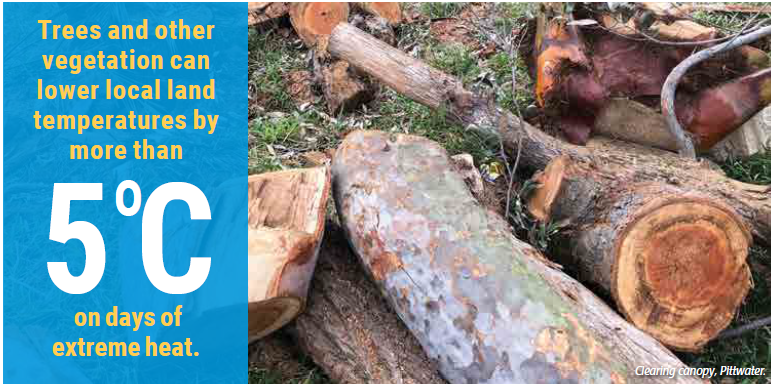Value of urban tree canopy

Miranda Korzy
candidate for Pittwater Ward in the Northern Beaches Council
Find out more about Miranda
Anyone following Facebook groups in Pittwater, on Sydney’s Northern Beaches, would be familiar with outraged posts about yet another old-growth tree falling victim to the chainsaw. All too common are the photos of giant spotted gums or angophoras, having taken decades to grow and providing homes for wildlife, hacked to the ground. Others call for locals to oppose development applications proposing to clear dozens of trees from a block destined for housing.
While the battle for the forest plays out on social media, researchers remind us that trees play a vital role in our urban landscapes.

One of these researchers is Macquarie University’s Leigh Staas, Program Manager of the Which Plant Where research unit. Ms Staas says that trees can improve air quality, decrease stormwater run-off, provide shelter for animals and reduce urban heat. In fact, research from the program has found that trees and other vegetation can lower local land temperatures by more than 5 °C on days of extreme heat.
“Right now, our cities are undergoing an enormous transformation,” Ms Staas tells GreenVoice. “We are losing green space and trees to such things as major infrastructure works, urban development, granny flats and bigger houses with small yards.
This type of urban development and planning will not protect us against climate change and rising temperatures.
We need to protect the existing urban canopy.” Urban canopy loss has been quantified by the Greener Spaces Better Places group, based at Melbourne’s RMIT, with a survey of all 116 urban council areas around Australia in 2020.
Recently reported in Where will all the rees be, council planners, arborists and landscape architects were amongst the respondents.
The bad news was that while urban canopy cover has increased around Australia since 2016 by 62 per cent, long-term loss of green cover has persisted, with 68 per cent less than in 2013. What’s more, the study found most of the decline has happened on private land. Lead researcher, RMIT Associate Professor Joe Hurley, says that councils directly control vegetation in streets and parks but protecting the urban forest on private land is much harder.
“What we’ve heard from councils is that while people generally support the protection and enhancement of green cover in public spaces, they’re less inclined to support the same on private land,” he told GreenVoice in a statement.
“We need to urgently … turn our attention to privately held land and the significant role it plays for green cover in our towns and cities, so we don’t continue to see this incremental systemic erosion of green cover.”
Another researcher on the project, urban tree consultant Meg Caffin, believes a comprehensive state strategy dealing with private land through regulation, resourcing and education is essential, but that there is also a role for councils.
“We need to continue to grow the understanding of the positive individual and collective benefits of trees and shrubs on private property, not only with residents and developers, but also with councillors, who are often the ones on the frontline dealing with community conflict (over) tree removal,” Ms Caffin says.
“Given the number of trees on private land, it’s near impossible to make up for the significant losses happening by planting on public land.
Many suggestions for ways councils can increase canopy on private land are mentioned in the report – many originating from respondents. They range from tree audits, reducing the number of tree removal exemptions, and incentives for landowners to manage canopy trees on their land, to advocating for overhead wires to be bundled together or placed underground.
Assoc Prof Hurley stresses that until trees are recognised as infrastructure, the future of urban forests is at risk. “In the face of a warming climate, green cover could make all the difference between making scorching suburbs liveable and unliveable,” he says.
“We must work together to ensure that as our towns and cities grow, so too does our green cover, as essential infrastructure.” Changing the culture of clear felling a block for development or cutting
down trees for a view will not be easy. But if anyone’s ready to take up the challenge, it’ll be Greens councillors.
Miranda Korzy is a candidate for the Pittwater Ward of Northern Beaches.

Donate
Unlike Labor and the Coalition, we don’t have the pockets of big business.
We have something far more powerful. You.
